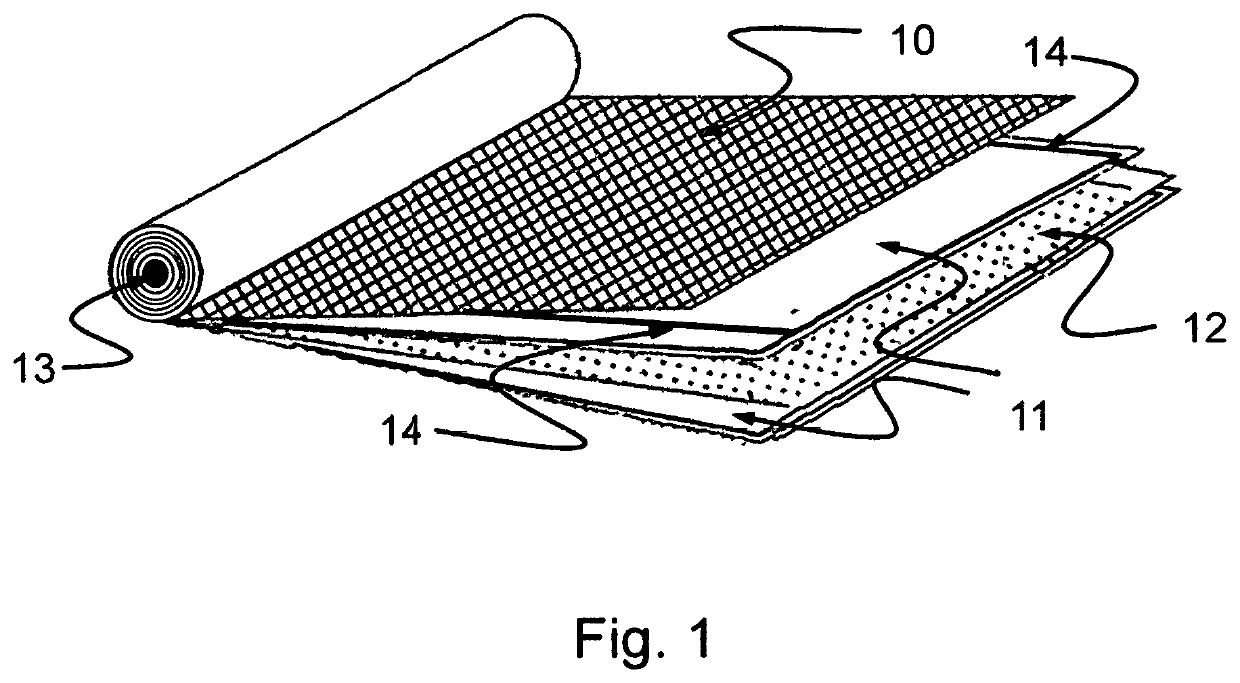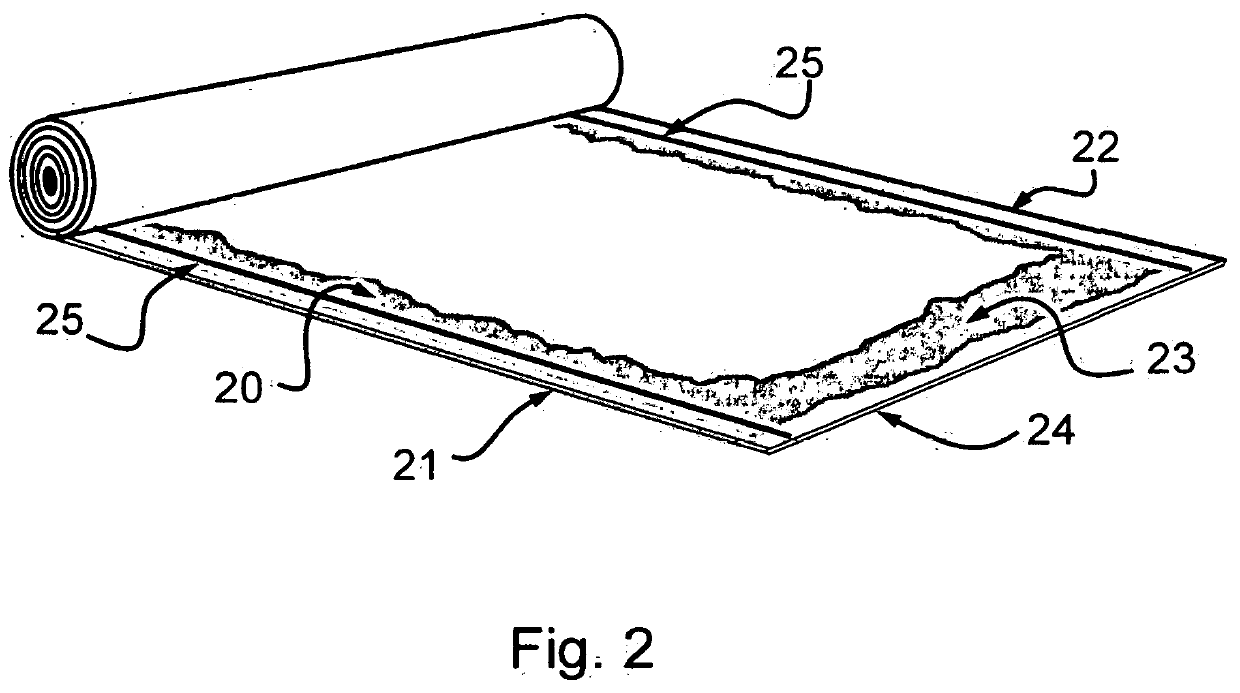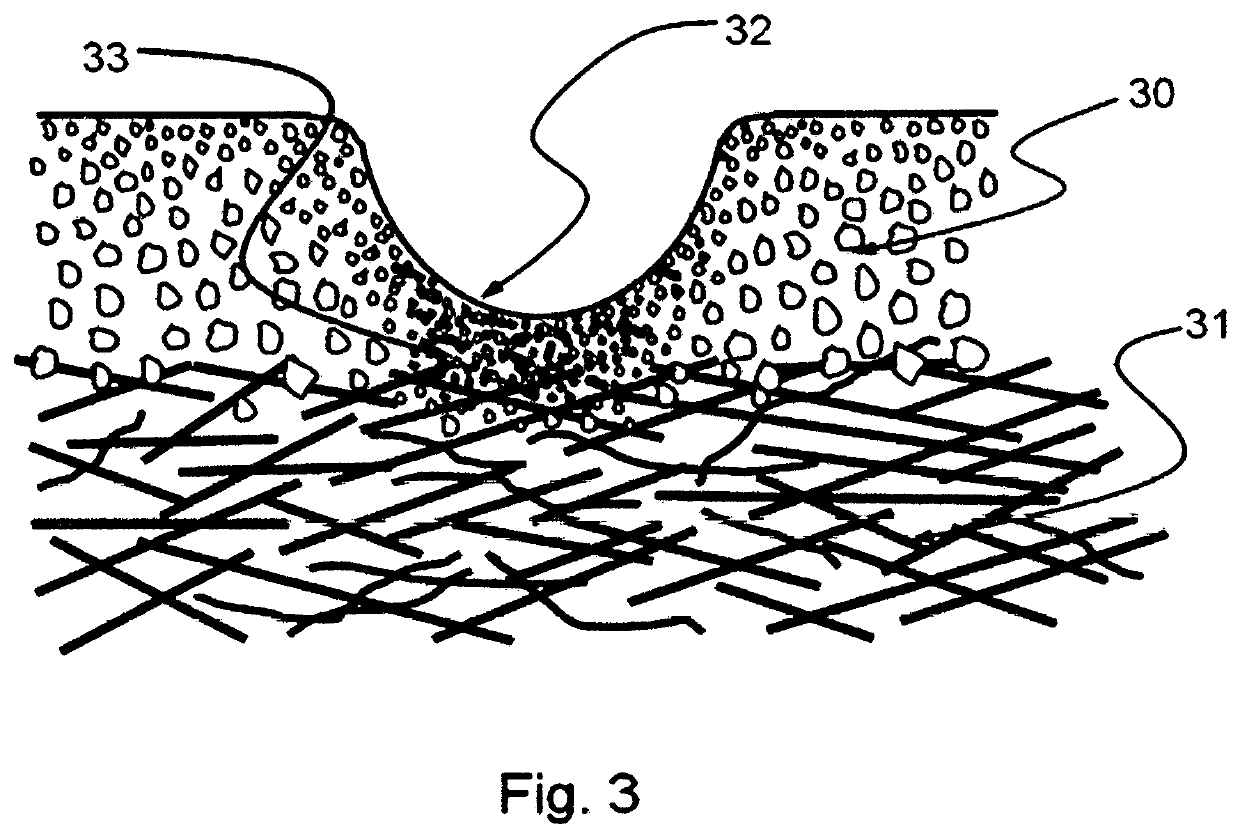Reduced lateral leakage in reverse osmosis devices
- Summary
- Abstract
- Description
- Claims
- Application Information
AI Technical Summary
Benefits of technology
Problems solved by technology
Method used
Image
Examples
Embodiment Construction
[0018]A method by which reverse osmosis membranes suitable for application in seawater desalination are made involves generally the following basic steps. A nonwoven web is coated with a solution of an engineering plastic (commonly polysulfone) dissolved in a water-miscible solvent. The coated web is passed through a water bath, which extracts the solvent and precipitates the plastic under conditions that generate a porous coating of the plastic. The coated web is impregnated with an aqueous solution containing an aromatic amine having on average at least two amino groups. Excess solution is removed as by a nip roller or an air knife or other suitable means. The impregnated web is then contacted with a nonaqueous solution containing preferably one or more aromatic acyl halides, having on average 2.2 to 3.0 acyl halide groups per aromatic ring. An aromatic polyamide forms at the interface between the aqueous and nonaqueous phases. The polyamide-coated web is subsequently passed throu...
PUM
 Login to view more
Login to view more Abstract
Description
Claims
Application Information
 Login to view more
Login to view more - R&D Engineer
- R&D Manager
- IP Professional
- Industry Leading Data Capabilities
- Powerful AI technology
- Patent DNA Extraction
Browse by: Latest US Patents, China's latest patents, Technical Efficacy Thesaurus, Application Domain, Technology Topic.
© 2024 PatSnap. All rights reserved.Legal|Privacy policy|Modern Slavery Act Transparency Statement|Sitemap



